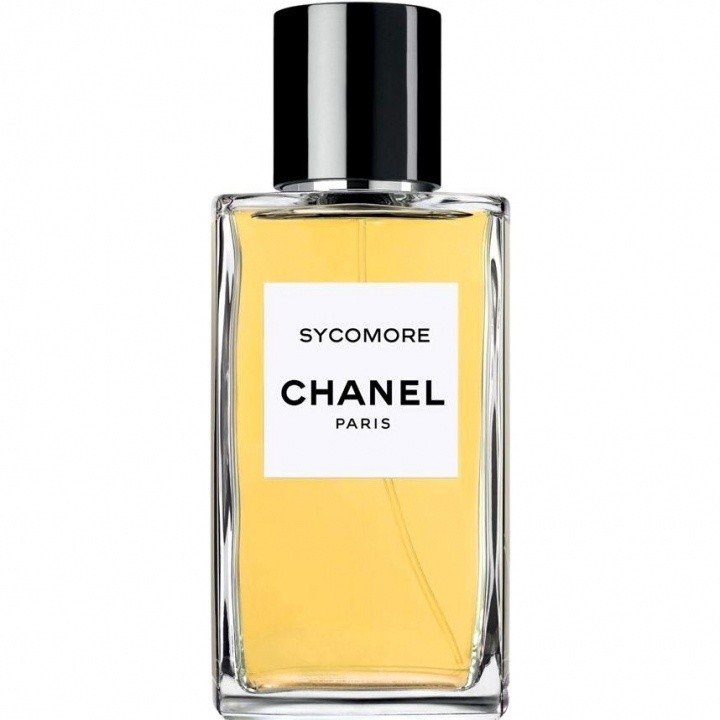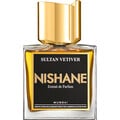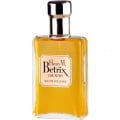26
Top Review
Translated
Show original
"Hail to thee, Sycamore of Nut, mother of Osiris!"
for vetiver lovers, "Sycomore" has the status of a kind of Holy Grail - and for Chanel aficionados anyway. I had been looking for an opportunity to test it for a long time. The small perfumery next door doesn't stock it, and I wouldn't have felt comfortable forking out 200 to 300 euros for a blind purchase just on the basis of whispers and enthusiasm. Unfortunately, Chanel has a penchant for exclusivity and has launched "Sycomore" in a range of the same name. "Les Exclusifs de Chanel" are each dedicated to a chapter or an element from the life of the fashion and style icon. They include fragrances such as "31 Rue de Cambon" - named after the address of Chanel's atelier and apartment in Paris, "Bel Respiro" - after her spring residence in the countryside of the same name, "Boy" - named after Chanel's companion Arthur "Boy" Chapel, or "1932" - after the year in which Chanel created an exclusive jewelry collection together with Paul Iribe. A whole universe of secret messages for adepts.
In "Sycomore", this self-referentiality takes place on a meta-level, so to speak, which remains entirely within the cosmos of fragrances. The name borrows from an old Chanel perfume, created in 1930 according to Mademoiselle's ideas and realized by none other than Ernest Beaux, the creator of the legendary "No.5".
However, the reinterpretation has at best an indirect connection with the historical fragrance. It is described as a very straightforward and elegant woody-floral fragrance, at the time like much of Chanel's style for women with clear borrowings from a more masculine domain - in this case the woody notes. However, the focus of this first "Sycomore" was a cedar-tobacco accord and not, as in the new creation, vetiver. Nevertheless, it certainly had a very androgynous effect at the time - "unisex" avant la lettre. The name "Sycomore" also refers to wood, and presumably not to the sycamore maple (Èrable Sycomore in French), but to the mulberry fig (Ficus Sycomorus) native to the Levant and large parts of Africa. The mighty tree was considered sacred by the ancient Egyptians: symbolizing the sky goddess Nut, it is certainly worthy as the namesake of a Holy Grail.
Woods are also at the heart of the new interpretation of "Sycomore" created by Jacques Polge and Christopher Sheldrake and first launched as an eau de toilette in 2008, but here, as already mentioned, with vetiver. I myself have the EdP version from 2016 to test, which I was finally able to purchase as a sample (many thanks to Jolene!). Many people think it doesn't come close to the previous version. I can't judge that, but it's fantastic in any case.
Sycomore" (especially the 2008 version) is often compared to Nathalie Lorson's classic "Encre Noire" from 2006. This is not entirely far-fetched, as they are both based on a striking accord of vetiver and cypress, which defines and carries the fragrance in each case. And even when I tested the 2016 version against "Encre Noire", I cannot deny a certain relationship. Nevertheless, the comparison is certainly misleading, at least if it is exaggerated and the two fragrances are described as almost interchangeable "fragrance twins", as can sometimes be read. They are certainly not, but are both masterpieces in their own right, which, apart from their central accord, are structured completely differently and each follow their own unique concept and different intentions.
Where "Encre Noire" is brusque and cool, "Sycomore" is rounded and much warmer. While "Encre Noire" relies entirely on cypress in combination with several vetiver variants and the somewhat pungent vetiver acetate, the central accord in "Sycomore" is complemented by juniper, which makes it less sharp and more spicy. The pink pepper does the rest. In addition, the Chanel fragrance has a softer and warmer counterpart in the base with sandalwood than the cashmeran in "Encre Noire", and the initially counterintuitive violet and a gentle veil of Chanel aldehydes also create a softer freshness, while a tobacco note contributes something sweet and smoky and balances the composition beautifully. Without question a great success among vetiver fragrances!
Which one is more successful? - Hard to say. The originality value of "Encre Noire" is probably greater. It has the more striking unique selling point. "Sycomore" implements the vetiver-cypress theme as a very noble and dignified feel-good fragrance that caresses rather than challenges the wearer. Of course, it does not have the radicalism and uncompromising nature of "Encre Noire". "Sycomore" is certainly the more conventional perfume, but that's really not a bad thing. It is certainly more versatile and appeals to a wider audience without ever being the least bit pleasing.
Lalique famously launched an "à l'Extreme" version of "Encre Noire" a few years later. This one follows a similar path in some ways, softening the fragrance with sandalwood and, in this case, iris, but at the same time relying on resins ranging from incense to elemi, resulting in a fantastically dark, smoky melange - for me, perhaps still the apotheosis of the vetiver-cypress accord.
But Chanel has also gone one step further since 2022 and has launched "Sycomore" as an extrait de parfum. Or is it a step back? Because on the one hand, the fragrance is even more exclusive here - you can choose between the standard version at just under 300 euros for 15 ml and a limited edition of 20 numbered copies in a crystal flacon and handmade, folding altar-like shrine, which is said to be priced in the five-figure range. In this version, it is likely to be as difficult to find as the original fragrance from 1930 and is therefore largely relegated to the realm of legend. On the other hand, Olivier Polge's reworking of the fragrance is supposed to be closer to Ernest Beaux's original creation in terms of olfactory notes - with iris, cedarwood and vanilla. Whether he really does this or whether it is pure marketing remains to be seen. Whether this can really improve "Sycomore" once again also remains to be seen.
In "Sycomore", this self-referentiality takes place on a meta-level, so to speak, which remains entirely within the cosmos of fragrances. The name borrows from an old Chanel perfume, created in 1930 according to Mademoiselle's ideas and realized by none other than Ernest Beaux, the creator of the legendary "No.5".
However, the reinterpretation has at best an indirect connection with the historical fragrance. It is described as a very straightforward and elegant woody-floral fragrance, at the time like much of Chanel's style for women with clear borrowings from a more masculine domain - in this case the woody notes. However, the focus of this first "Sycomore" was a cedar-tobacco accord and not, as in the new creation, vetiver. Nevertheless, it certainly had a very androgynous effect at the time - "unisex" avant la lettre. The name "Sycomore" also refers to wood, and presumably not to the sycamore maple (Èrable Sycomore in French), but to the mulberry fig (Ficus Sycomorus) native to the Levant and large parts of Africa. The mighty tree was considered sacred by the ancient Egyptians: symbolizing the sky goddess Nut, it is certainly worthy as the namesake of a Holy Grail.
Woods are also at the heart of the new interpretation of "Sycomore" created by Jacques Polge and Christopher Sheldrake and first launched as an eau de toilette in 2008, but here, as already mentioned, with vetiver. I myself have the EdP version from 2016 to test, which I was finally able to purchase as a sample (many thanks to Jolene!). Many people think it doesn't come close to the previous version. I can't judge that, but it's fantastic in any case.
Sycomore" (especially the 2008 version) is often compared to Nathalie Lorson's classic "Encre Noire" from 2006. This is not entirely far-fetched, as they are both based on a striking accord of vetiver and cypress, which defines and carries the fragrance in each case. And even when I tested the 2016 version against "Encre Noire", I cannot deny a certain relationship. Nevertheless, the comparison is certainly misleading, at least if it is exaggerated and the two fragrances are described as almost interchangeable "fragrance twins", as can sometimes be read. They are certainly not, but are both masterpieces in their own right, which, apart from their central accord, are structured completely differently and each follow their own unique concept and different intentions.
Where "Encre Noire" is brusque and cool, "Sycomore" is rounded and much warmer. While "Encre Noire" relies entirely on cypress in combination with several vetiver variants and the somewhat pungent vetiver acetate, the central accord in "Sycomore" is complemented by juniper, which makes it less sharp and more spicy. The pink pepper does the rest. In addition, the Chanel fragrance has a softer and warmer counterpart in the base with sandalwood than the cashmeran in "Encre Noire", and the initially counterintuitive violet and a gentle veil of Chanel aldehydes also create a softer freshness, while a tobacco note contributes something sweet and smoky and balances the composition beautifully. Without question a great success among vetiver fragrances!
Which one is more successful? - Hard to say. The originality value of "Encre Noire" is probably greater. It has the more striking unique selling point. "Sycomore" implements the vetiver-cypress theme as a very noble and dignified feel-good fragrance that caresses rather than challenges the wearer. Of course, it does not have the radicalism and uncompromising nature of "Encre Noire". "Sycomore" is certainly the more conventional perfume, but that's really not a bad thing. It is certainly more versatile and appeals to a wider audience without ever being the least bit pleasing.
Lalique famously launched an "à l'Extreme" version of "Encre Noire" a few years later. This one follows a similar path in some ways, softening the fragrance with sandalwood and, in this case, iris, but at the same time relying on resins ranging from incense to elemi, resulting in a fantastically dark, smoky melange - for me, perhaps still the apotheosis of the vetiver-cypress accord.
But Chanel has also gone one step further since 2022 and has launched "Sycomore" as an extrait de parfum. Or is it a step back? Because on the one hand, the fragrance is even more exclusive here - you can choose between the standard version at just under 300 euros for 15 ml and a limited edition of 20 numbered copies in a crystal flacon and handmade, folding altar-like shrine, which is said to be priced in the five-figure range. In this version, it is likely to be as difficult to find as the original fragrance from 1930 and is therefore largely relegated to the realm of legend. On the other hand, Olivier Polge's reworking of the fragrance is supposed to be closer to Ernest Beaux's original creation in terms of olfactory notes - with iris, cedarwood and vanilla. Whether he really does this or whether it is pure marketing remains to be seen. Whether this can really improve "Sycomore" once again also remains to be seen.
6 Comments
Latest Reviews
 Mairuwa 20 days ago
Mairuwa 20 days ago
Vetiver Fou d'Absinthe or: The Sultan and the Green Fairy
As a self-confessed vetiver lover, I blindly bought this fragrance simply because of the hymn-like descriptions (and, on the other hand, the bottomless rips) in some reviews. And I haven't regretted it for a moment....
Translated
 Mairuwa 3 months ago
Mairuwa 3 months ago
A la Recherche des Senteurs Perdues - Betrix Country Revisited
This is one of the first fragrances that I have dealt with in detail, namely in my childhood. Admittedly, this was only in the form of a fragrance sample that my parents probably received as a gift from...
Translated




